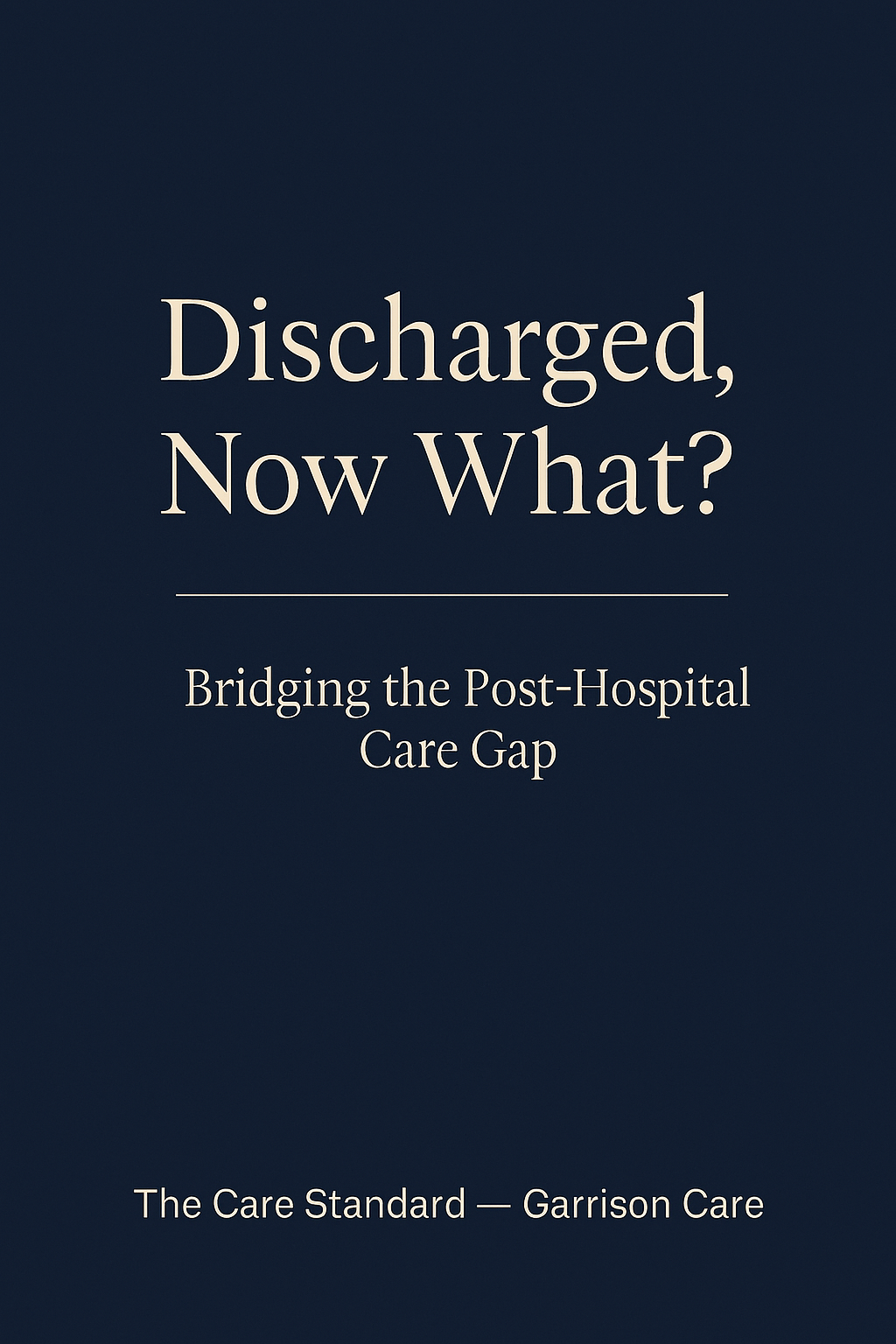Discharged, Now What? Bridging the Post-Hospital Care Gap
Families breathe a sigh of relief the moment a loved one is discharged from the hospital. The crisis feels over.
But the real work starts at home.
Every week, families across the GTA take on complex care routines they were never trained for: wound care, medication schedules, mobility support, oxygen management, and safety monitoring. Most of it happens without the guidance they expected to receive before leaving the hospital.
Here's what families tell me again and again:
"We left the hospital with a bag of supplies and a lot of instructions… but no plan."
The gap between discharge and safe recovery is one of the most vulnerable points in a person's health journey. Falls happen. Medications get mixed up. Follow-up appointments get missed. Caregivers feel pressure to figure it out while juggling their own lives, work, and emotions.
Why This Gap Exists
Hospitals move fast. Beds turn over quickly. Discharge is a milestone, not a destination.
Families are expected to transition into a complex home-care role overnight, even as energy is low and stress is high.
People don't need perfection in those first 48–72 hours. They need clarity.
What Creates a Smooth Transition
A strong post-hospital plan protects recovery and restores confidence. It focuses on a few simple but powerful pillars:
1. A clear medication path
Everyone needs to know the what, when, and why behind every pill, especially when routines change after a hospital stay.
2. A safe home environment
Small adjustments reduce big risks. Proper lighting, clear walkways, grab support, and safe bathroom setups matter more than most people realize.
3. A care partner who sees the whole picture
Someone who pays attention to patterns: energy levels, breathing changes, mobility shifts, and signs that something needs attention.
4. A calm way to handle questions
Families need a place to turn when something feels off. A number they can call. A human they can trust.
5. A realistic recovery timeline
Healing never follows the script. Good planning leaves room for rest, setbacks, and honest conversations.
The Recovery Families Deserve
When discharge is followed by structure instead of guesswork, families experience less stress and older adults recover with more dignity.
This comes down to organized support, smart planning, and the right people in the right moments.
That's the recovery path we help families build.
Final Thoughts:
Final Thought
A safe transition home is one of the strongest predictors of long-term stability. When families feel supported from day one, recovery becomes smoother, calmer, and far more sustainable.
A Question to Consider
When someone you care about comes home from the hospital, who anchors the first 72 hours?
Next Week
Safety Without Sacrificing Dignity: Designing Care That Respects Both.
A deep look at how to protect independence without creating resistance, shame, or emotional distance.
Need support during a hospital discharge or recovery?
Reach out anytime: info@garrisoncare.com
By commenting, you agree to our Comment Moderation Policy.

